So remember when I said I would have this writeup finished back at the end of January? Yeah, that didn’t happen. But it’s finished now! I find that my responsibilities and opportunities as a full time developer have made me write less not because I don’t want to, but because I’m around developers all the time and talking about these kind of things scratches the same itch. I’m at work on a postmortem for Stick to It, the recently released iOS game I worked on at Magic Pixel, and a couple deconstructions that have been in the oven for far too long.
But back to the point – here’s the list of all the games I played in 2012. “Played” in this sense means I gave them more than a couple hours (where applicable) or in many cases completed them entirely. This console generation has gone on for so long that I’m still catching up on some of the hidden gems I missed in previous years, and I know not all of these games are new for everyone. I hope this list will give other people a good overview of my gaming habits (and background), but more than that, I hope I might tip someone off to something they might not have otherwise played.
10000000Â (iOS)
10000000 is a dungeon-crawling puzzle RPG with a very unfortunate name, but it’s a hell of a lot of fun for the few hours it lasts. The game is a constant grind where you go on short runs, earn resources, and upgrade your character to go on slightly longer runs – like any number of early 2000s flash games – but this particular implementation of the match-three puzzle mechanic grabbed me. The icons matched on the bottom half of the screen determine what attacks or spells you use against monsters on the top half of the screen. I don’t think I’ve gone back to the game at all since hitting the score goal indicated in the title.
Assassin’s Creed Revelations (Xbox 360)
Another Assassin’s Creed game, another opportunity for me to run around and clear a bunch of dots off of a map. The epic moments in Revelations were easily the best of the series so far, even if Constantinople wasn’t the best venue. The other two games in the Ezio trilogy were worthwhile and this one is too. It’s full of fun acrobatic sequences, fun collect-a-thons, and nonsensical pseudo history to push the series’ trademark mindfuck/bullshit-as-we-go story along to its inevitable disappointing end. Speaking of which…
Assassin’s Creed III (Xbox 360)
After all that went right since Assassin’s Creed II, I am completely baffled at how Ubisoft pushed Assassin’s Creed III out the door in the state it’s in. It’s a beautiful game that the developers are afraid to let you play, lest you encounter the numerous bugs around everyone corner. The cutscenes are fantastic and far too frequent, movement through the world is a joy in the wilderness areas but a chore in the cities, where the guards seem to be alerted at random. Kirk Hamilton wrote a great piece on the game’s ending that matched my experience almost exactly. The production value is nowhere near the bar set by the other games in the series – from the menus, to the UI, to the controls – and it’s so frustrating because it’s so obvious this could have been a truly amazing game with just a few more months in the oven. It has made Ubisoft more money than any other game in their history, so I don’t expect any lessons to be learned, but I was sorely disappointed as a fan.
Assassin’s Creed III Liberation (PS Vita)
Although the Metacritic score doesn’t agree, I think Liberation is a better game than Assassin’s Creed III. It looks great on the Vita, controls just as well, includes all the mechanics of the console game and adds a few new ones. The smaller regions bring focus to the game and moving from place to place feel more deliberate. I found myself opting to run through the world instead of using the fast travel as I did playing the main game on my Xbox. Aveline is a decent protagonist, with a lot more emotion than Connor but less likable than Ezio or Altair. Here’s hoping the series can land back on its feet in the next iteration.
Bastion (PC)
I’ve tried playing Bastion on iPad, PC, and Xbox, and I’ve gotten to the world hub and stopped on all three platforms. I am in the 0.01% of Bastion players who find the narrator extremely annoying, and I didn’t see the depth in the gameplay. I’ll call this one of those anomalies where I don’t like a game that everyone else does, at no fault to the developers.
Battlefield 3Â (PC)
I’ve never seen so many realistic greys and browns in my life. But seriously, Battlefield 3 is a pretty game. It was one of the first games I tried on my new, beefy graphics card and I enjoyed the multiplayer for about a month before my friends and I went back to League of Legends and Minecraft. I think I played the campaign mode, but I don’t remember it. Sounds about right.
Beat Sneak Bandit (iOS)
I loved the style of Beat Sneak Bandit but didn’t play all that far in. The art and presentation makes the one button platforming mechanic shine above similar games like One Tap Hero.
Beyond Good & Evil HDÂ (Xbox 360)
I couldn’t resist replaying one of my favorites from the last generation when it got the HD treatment, and I think it held up well even if some of the technology references seem horribly outdated. Hillys is still one of the most interesting worlds I’ve played in, and I’m anxious to see what becomes of the sequel.
Bloop (iOS)
I discovered Bloop at Indiecade, and instantly bought it when I got back to my own iPad at home. If you don’t have it, pick it up – you’ll get to use your iDevice in a new way and it’s a great example of successful simplistic design. It’s one of a few multiplayer games you can play with four friends on a single device, and it requires no explanation. We need more games like Bloop – I’m a huge fan of the personal interaction of local co-op, and Bloop adds in a physical interaction similar to Twister.
Borderlands 2 (PC)
This was a big surprise for me – I liked the original Borderlands, but never finished it. I’ve finished Borderlands 2 and nearly completed two other playthroughs with different character classes. I’ve played both single player and with friends, and I’ve bought the season pass to play the DLC. It’s pure fun the entire way, with great writing, simple gameplay, and instantly rewarding with the constant loot machine and map exploration. Steam cheerfully reports that I’ve put 86 hours into Borderlands 2 and I’m sure I’ve got a ways to go.
Burnout Crash (iOS)
Crash is a faithful port of the XBLA game, and it controls really well. It’s essentially the Burnout Crash Mode from a top-down perspective For whatever reason, I haven’t gone back to it since the week I picked it up – I think each level lasted a little bit too long, maybe? The direct interactions you have in steering the cars and setting off explosions are a blast, but there are lots of non-interactive events (tornadoes, etc) that you simply sit and watch. Those look cool, but aren’t as fun – at least on mobile.
Dear Esther (PC)
This is an art game I simply didn’t get. It’s a moderately interactive poem. You walk forward. You hear someone telling you a story. It’s kind of mysterious. It’s pretty. Nothing happens, and then the game takes over for an on-rails cutscene and it’s over. Sorry, critics – I didn’t get it.
Dishonored (Xbox 360)
Still playing this one – I’m only about five hours in right now – but I’m glad to see there are still some developers who aren’t afraid of trying new and novel methods of first person platforming. The “blink” ability (short range teleportation) is what everyone buzzed about with this game, and its execution is deserving of the praise, making vertical navigation fun much like Portal did years ago. Deciding how to approach each scenario in Dishonored, knowing that I have this unconventional ability, is a thrilling experience for me. Usually stealth games will present a “stealth” or “run and gun” solution to each encounter, but Dishonored’s “stealth” option could include teleporting behind an enemy to sneak up on them, possessing a fish in a pond they’re walking by – jumping out and killing them as they walk by, or simply skirting by without hurting anyone at all. When developers say they give players a lot of choice, they’re usually full of shit, but Arkane did a pretty damn good job of it.
Fez (Xbox 360)
Fez is the first game I’ve played in a long time where I had to get out a pen and paper to finish it, and that’s a good thing. I expected a bunch of puzzles based on the world-rotation mechanic, but instead was treated with a ton of decryption work. There may not be another game this rich with secrets in this decade. Aside from the performance issues, it’s a beautiful and unexpectedly deep adventure. I stuck with it till the end, finding all the game’s collectibles over the course of a few weeks and was careful not to talk about it to other people until I was finished.
Gravity Rush (PS Vita)
Gravity Rush is a beautiful game set in an awesome world. The graphic novel presentation of the cutscenes stands out as something I’ll go back to and look at when I want inspiration for future projects. It’s a shame they never did much more with the gameplay than they show in the first hour or so. The combat system was a lot of fun until they gave me a ton of enemies to fight, and then suddenly it wasn’t fun anymore.
Halo 4Â (Xbox 360)
Hats off to 343 Industries – it’s never easy to create a follow up in a great series, but it’s even harder when it’s your studio’s freshman project. Halo 4 might be the best one in the series, so they have nothing to worry about there. It’s certainly the most beautiful game on the Xbox 360, and it’s tuned to perfection. It surprised me in traditional Halo fashion – the game does very little to innovate, but it executes so well in every area that the experience melts together in the best possible way. I think there might have been a story about reclaiming a chiropractor from the libertarians who want to redact my cortana, but I learned it was a lot more fun when I just kept shooting things.
Hot Shots Golf: World Invitational (PS Vita)
Hot Shots was my surprise most-played game on the Vita. Not being a real fan of the series, I found a lot to love between its charm and challenge. It doesn’t feel so much like a golf game as much as it does an arcade game – a game you play in short segments, feeling like you’re just going to go one more level and bragging to your friends when you do that one thing that is particularly awesome.
Journey (PlayStation 3)
I had been following Journey for a while, not only as a fan of games, but as a friend of a number of people who worked on the game. My experience was a positive one, with a random partner who I felt a connection to. Regardless of whether or not that connection existed, I was convinced we were communicating at that specific moment in the context of the game, and it felt pretty special. I haven’t been able to have that experience going back and playing it again. I also know some friends who didn’t have a good experience the first time around, and that ruined a bit of the magic. There are so many conditional variables that affect one’s experience in Journey, but it really couldn’t be done any other way.
Little Inferno (PC)
I’ll admit it – as much as I appreciated this game, I felt a bit ripped off by it. I preordered it as soon as it was announced without knowing anything about it, mostly because of Kyle Gabler’s involvement. But what I got was a game that doesn’t justify $15 these days, and one that feels like it was made for a tablet rather than a PC, and one that isn’t really a game at all. It’s a fine toy, and I did have fun with it, and had the expectations been set properly, I probably would have enjoyed it more.
Mark of the Ninja (Xbox 360)
Klei is making a pretty amazing splash with their recent 2D games, all with an absolutely stunning art style. I always wanted to like the Shank games but never got too far in them. Mark of the Ninja’s stealth mechanics on their own are a ton of fun and made it a lot easier for me to get hooked. It has tight controls, awesome graphics, unique gameplay, and a ton of attention to detail. Pick it up if you like stealth games at all, because it easily deserves to be held on the same level as Dishonored.
Middle Manager of Justice (iOS)
Double Fine made a social game, but tried to be different by effectively removing the pay walls. Without paywalls, the game’s shallow design is highly exposed. It’s something you could play for five or ten minutes at a time, take breaks, come back and enjoy, but I think the game’s willingness to let me sit there and play for one or two hours straight highlights everything bad about the experience. The art is fantastic, the production value is off the charts, and the game oozes character, but the fun oozes out almost as fast.
NCAA Football ’13Â (Xbox 360)
I’m cursed. I know that the NCAA games are always about a year behind the Madden games in terms of features, but I like college football more than the NFL so I buy it anyways. And every year I’m disappointed. This was the year EA decided to nerf the overpowered option plays from the year before, and unfortunately for me, my alma mater runs an all-option offense, meaning I was unable to win a single game all season in the campaign mode. Georgia Tech didn’t have a great team, but they were a lot better than that. When there are a hundred and some odd teams you have to balance, some will get left behind, but the whole experience gets ruined if you’re a fan of that team that didn’t make the cut. On the other hand, I learned most of the names of the players at Boise State by playing through a season with them instead.
Oddworld: Stranger’s Wrath HD (PC)
I missed Stranger’s Wrath the first time around. The Oddworld universe is one of the best in games, and I found the constant switching between first and third person perspectives to be more refreshing than annoying. I’m only about three hours in on my PC playthrough, but liked it enough that I picked it up for Vita. Now I just need to get around to playing the Vita version.
Penny Arcade’s On the Rain Slick Precipice of Darkness 3 (PC)
I was a fan of the previous two Penny Arcade games, and was worried about how the series would fare in new hands. I thoroughly enjoyed and finished Rain Slick Precipice of Darkness 3, and although there’s a new battle system and look to the game, it’s similar to the previous games in that it’s driven almost entirely by its writing.
Pudding Monsters (iOS)
Zepto Labs followed up Cut the Rope with another highly polished puzzle game, and I had good fun with it for the 90 minutes or so it took to get through. I trust they’ll continue adding levels like Zepto Labs does, and I trust I’ll continue to enjoy said levels for years to come.
Rayman Jungle Run (iOS)
This was Apple’s game of the year, and although I think it’s the prettiest game on iOS, it didn’t grab me quite as strongly as other runners like Jetpack Joyride. It offers a greater sense of progression through its level structure, but a lesser sense of progression by changing up the formula so often that it’s hard to see your skills improving.
The Room (iOS)
The room is a charming (if not occasionally eerie) exploration game that feels well-suited for the iPad touchscreen. It takes a decade of touch and motion control gimmicks that developers have been forcing into other models and puts them into a package where they feel at home together – the series of gimmicks and interesting interactions are the entire game, and for a sub-$5 experience, it works really well and offers plenty of entertainment for a couple hours.
Saints Row: The Third (Xbox 360)
Pure, stupid, wonderful fun. Saints Row The Third joins the list of open world games I’ve obsessed my way to 100% completion with. The controls felt like a huge upgrade from GTA’s floaty drunk driving simulation, and even the crass humor managed to land pretty well with me. It has lots of memorable moments I was able to talk about with friends, and too many hidden goodies to enumerate.
Shove Pro (iOS)
This game came to my attention through its fantastic live-action trailer, a trailer so good that I didn’t think the game could possibly live up to it. The game proved me wrong. Although the visuals could use some love, the gameplay in Shove Pro is really solid. It’s part endless runner, part Burnout Crash mode, and all fun. Keep an eye on Rad Dragon, folks.
Snapshot (PC)
Snapshot is one of those games that has been on my radar forever – I remember seeing it at the first IGF I attended back at GDC 2008! It was an insta-buy for me the week before PAX and I played through a good chunk of it. The camera mechanic is a gimmick that only works in this game, but it works quite well. The puzzles are consistently clever and the art is charming. Can’t ask for much more from an indie puzzle platformer.
Sonic Jump (iOS)
Despite initial appearances, this is more than Doodle Jump – Sonic Edition. You play through a series of pre-designed levels (no procedural generation) with specific goals and objectives, and occasionally even boss fights. The level structure supports speed runs and leaderboards in a much more appetizing way than an infinite scroller because the top never feels out of reach. It’s quite a lot of fun if you can get past the annoying tilt-to-move control scheme employed by games like this.
Sound Shapes (PS Vita)
Jonathan Mak makes every game I come up with better than I do before I can release mine – first with Audiball, and now with Sound Shapes that  feels very much like my student project “A Sticky Situation,” and indeed, I used it as reference when developing Stick to It. Sound Shapes was my reason for purchasing a PS Vita (before it was announced that it would come to PS3) and I’ve played through it religiously. The level editor tools feel fantastic on Vita too. Oh, and the music is OK I guess.
Spaceteam (iOS)
I picked this up after seeing some of my friends in the press enamored with it over Twitter, and soon after I had a bunch of my co-workers playing in the office. Spaceteam is my iOS game of the year, and perhaps the multiplayer game I will play the most going into the future. It’s a game everyone playing can instantly understand within the first 10 seconds of playing, and it hasn’t gotten dull after dozens of sessions. Everything about this game – the simple, janky art style, the silly names of spaceship equipment, the hilarious “malfunctions,” and even the sound effects – bring me back in time in the best possible way, making me feel like I’m playing something that was a part of my childhood. It’s a hard feeling to describe and you should download it now, especially if you develop multiplayer games.
Spec Ops: The Line (Xbox 360)
This was the love-it-or-hate-it game of the year. I played through the first two hours and felt very uncomfortable, moreso than in most third person military shooters, and then I realized the game was trying to make me uncomfortable, and I fell in love with it from then on out. I highly recommend that anyone interested in story design take a look at Spec-Ops. I often overlook the importance of story and mood in games because I love to focus on novel gameplay and prototyping, but Spec-Ops is the best argument for the impact of emotional narrative I’ve seen in years.
Spell Sword (iOS)
This is a mindless beat ’em up that I picked up shortly after getting an iPad. It offers little in the way of innovation, but it’s very polished and could be a great starting point for any devs looking at virtual button control schemes because the controls rarely get in the way.
Star Wars: The Old Republic (PC)
My biggest criticism with Bioware games has always been the dialog – I find the stories to move at an excruciatingly slow pace, and the writing of individual conversations to be rather dull. I still enjoyed the Mass Effect games despite the occasional required conversation (the  plots on their own are OK) and enjoyed KOTOR before that. But then came TOR. I played through to about level 15 and bailed – not even two full weeks into my initial subscription. Everything about the game felt sterile to me (emotionless conversations, uninspired texturing), and it assumed I had played years of WoW and left me to be completely and totally lost navigating the interface. This is clearly not a game designed for me.
Super Hexagon (iOS)
Remember how I complained that Super Meat Boy was unreasonably difficult for the sake of being difficult? I take it back after Super Hexagon, which has made me feel completely incompetent more times than any other game I can remember. It’s a brilliantly simple, unapologetic punch in the face and it’s one of my go-to iOS games when I only have a few minutes to play. Again!
Tales from Space: Mutant Blobs Attack (PS Vita)
I’ll be honest  – I picked this up because it resembled a game I made as a student in college, but I enjoyed it from start to finish. The graphics and characters are well designed and support the theme of the cheery blob apocalypse, and moving around the world was a lot of fun. Like many other Vita launch titles, the Vita-specific features were a bit mediocre (such as the tilt levels) but they didn’t do enough damage to weigh down the rest of the experience. It’s a no brainer to pick it up if you’re one of the dozen people with a Vita.
Thirty Flights of Loving (PC)
I’ll admit it: I never played Gravity Bone. That is, until I played Thirty Flights of Loving, finished it, said “what the fuck just happened,” and downloaded it. Then I played Thirty Flights of Loving again and enjoyed it quite a bit more. I had a chance to meet the one man team behind Blendo Games at a local game jam, and I’m really excited to play Quadrilateral Cowboy after playing these.
Touch My Katamari (PS Vita)
Brace yourselves – Namco has finally added a new mechanic to the Katamari franchise. Stretching and pulling the Katamari with the rear touch panel is fun in a Ren & Stimpy kind of way. The levels in Touch My Katamari are among the weakest in the series, but the new control scheme removes so many of the frustrations from the previous games that it is perhaps one of the most playable iterations in the series. I’m a bit shamed to admit I spent enough time with it to land on top of the world leaderboard for a bit when I bought it at the Vita’s launch, but you can thank me for those beautiful stars in the sky.
Twirdie (iOS)
A clever experimental game of golf with words, where the strength of your swing corresponds to the number of hits your word receives on Twitter over the past minute. It’s a fun game to show friends, and occasionally I find myself going back to it during big news events on Twitter (football games, political debates, and other silliness). Getting an eagle with only a “Mitt Romney” and “Tuning Fork” was a high point.
Uncharted: Golden Abyss (PS Vita)
A decent Uncharted game if you take out all the parts that required you to use the Vita’s exclusive features. Charcoal rubbings, hidden message light puzzles, and motion sensor rolling can all go. I actually found the optional motion sensor aiming to be a great addition to aiming with a stick when I needed extra precision. For all its faults, Golden Abyss made me confident that the Vita is capable of delivering console-style experiences better than any other current handheld platform, and it did a good job of showing me what my iPhone is bad at with its excellent control scheme.
Waking Mars (iOS)
If you were to tell me that one of the most memorable iOS titles of 2012 was a platfomer where you control a dude with a jetpack who grows plants and balances an ecosystem on Mars, I…I mean, it’s really a fucking crazy concept, right? But it works. And it’s perhaps more immersive than any other iOS game I’ve played.
The Walking Dead (PlayStation 3)
I only made it through the first episode of The Walking Dead, but it was enough for me to see why people love it. Very few games have succeeded at filling me with dread like this one (and Spec Ops, earlier on this list). I don’t know how soon I will finish the game. It’s an experience I’m glad I had but not one that I look forward to finishing. If nothing else, it’s a great example of how emotionally powerful games can be by the nature of player agency even in a highly scripted experience.
Warhammer 40,000: Space Marine (PlayStation 3)
Tried this in the free PlayStation Plus offer and was pleasantly surprised to find it’s not just another Gears of War clone – it’s a competent Gears of War clone. The emphasis on melee was a welcome mix to the genre and it never made me stop feeling like a badass. I am completely ignorant when it comes to the fiction of the Warhammer universe, and the game absolutely assumes some knowledge, so the story seemed somewhat degraded to “move from point A to point B and kill C” on a cycle that reset about every 20 minutes. It checks all the boxes and is well worth the PlayStation Plus admission price.
Xenoblade Chronicles (Wii)
This is an absolutely beautiful game that would be in everyone’s “game of the year” discussion if it had been released on any platform that doesn’t make your eyes bleed. It’s amazing that it looks as good as it does for Wii, but it’s also a shame because you can’t stop thinking about much more you would be enjoying it on a different platform. Novel battle system, good atmosphere, and decent story. I binged about 30 hours into it and haven’t gone back, mostly because I never turn on my Wii.

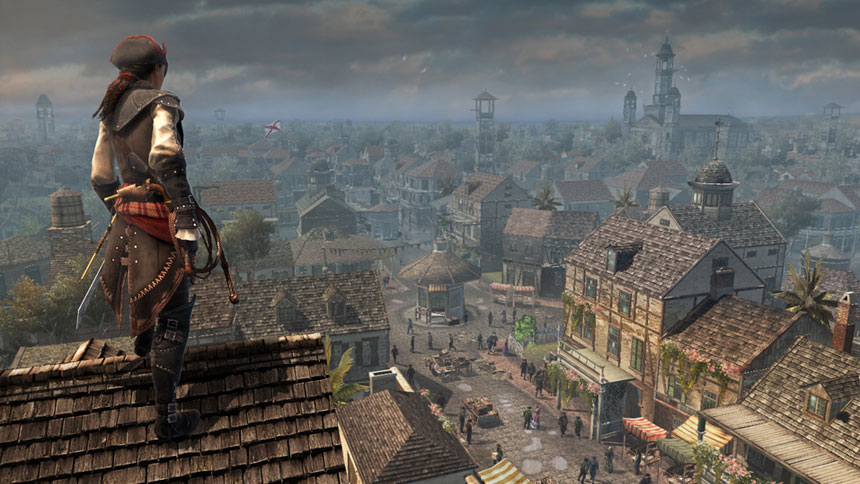
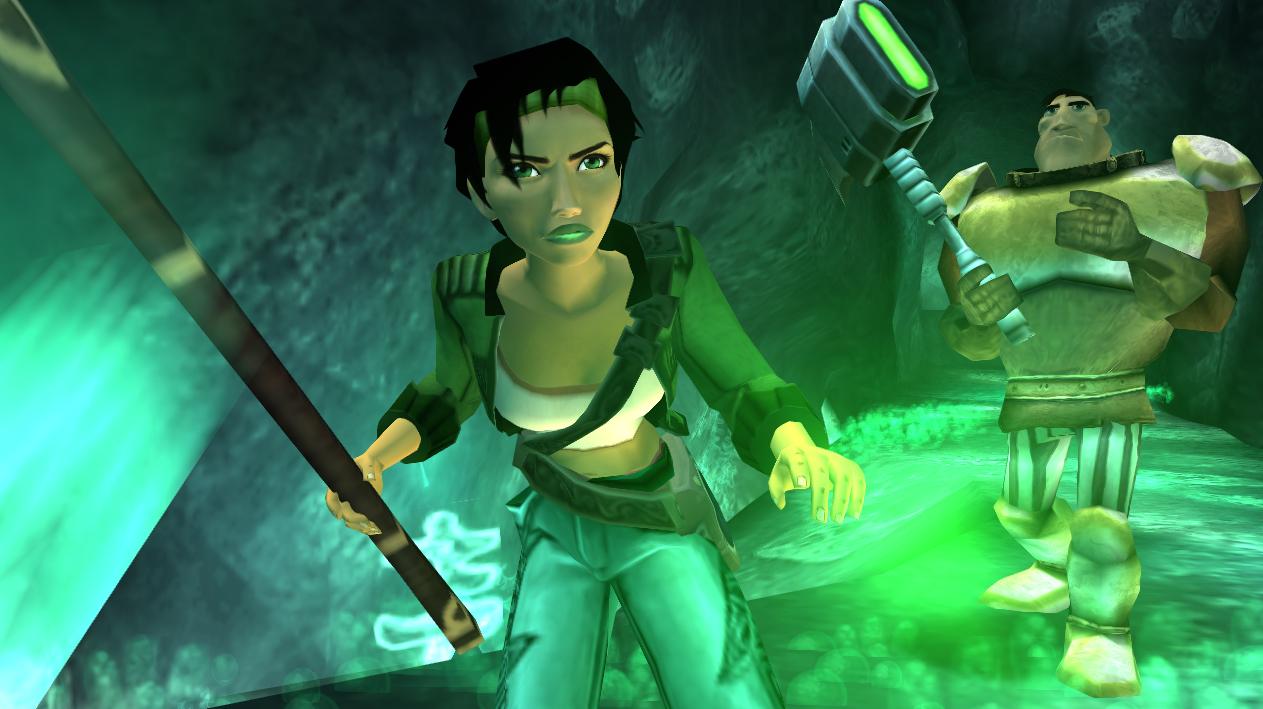
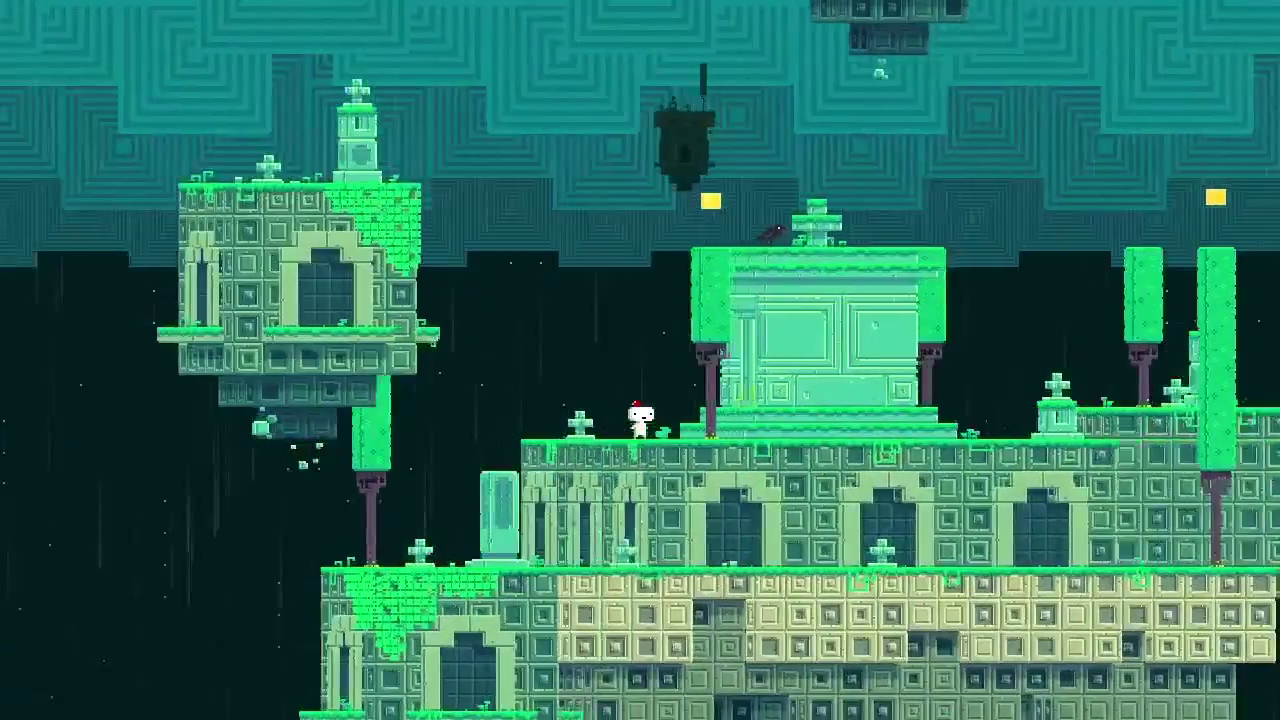
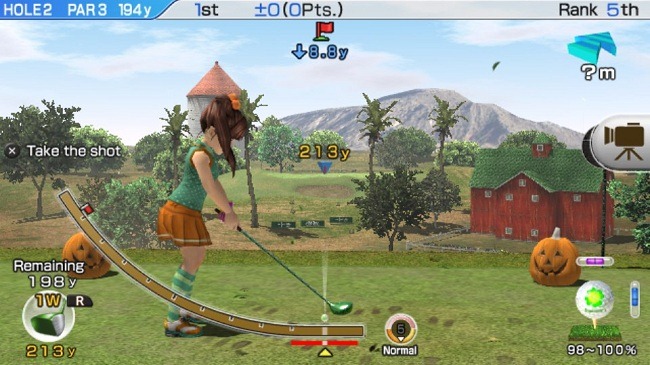
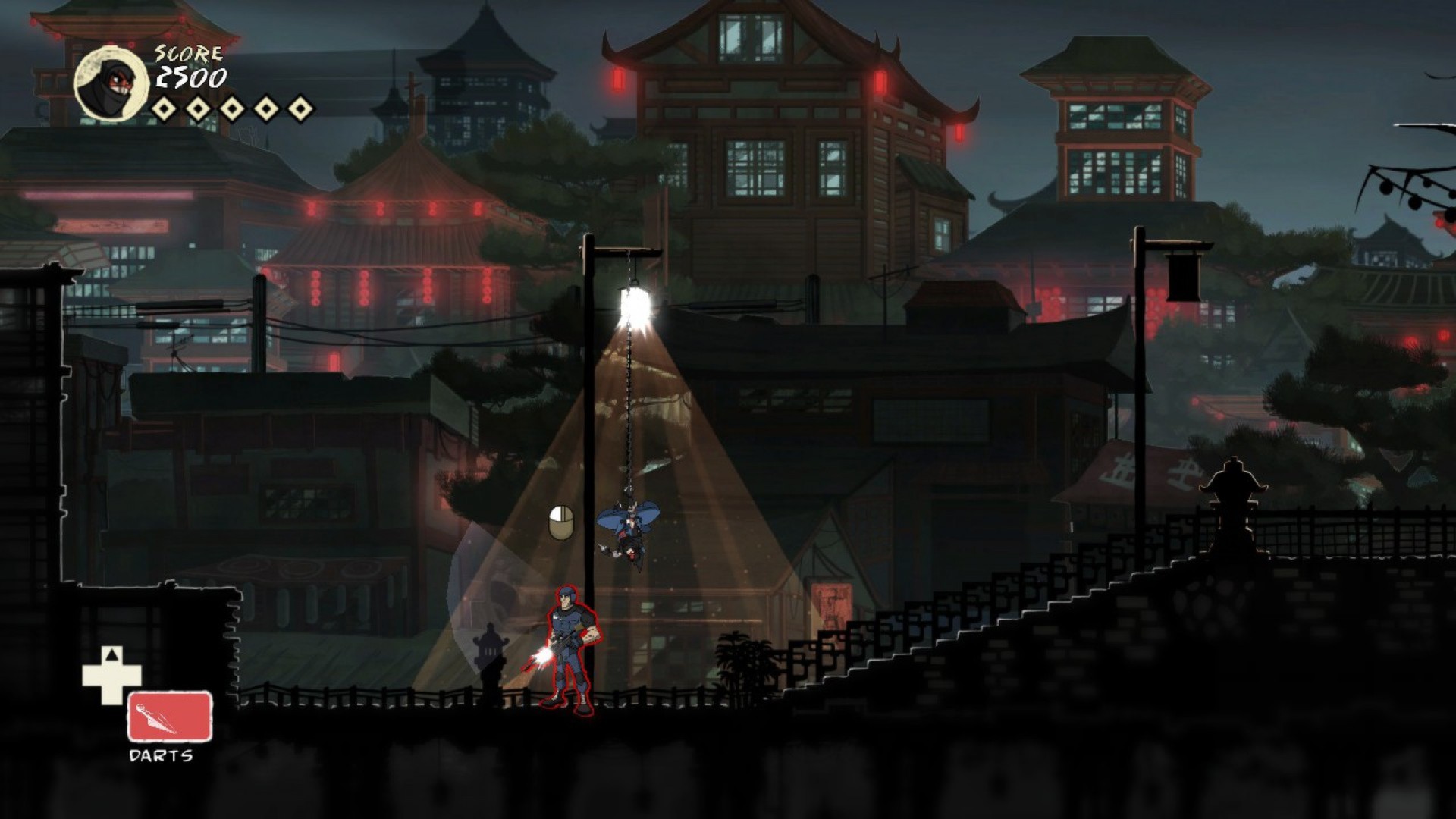
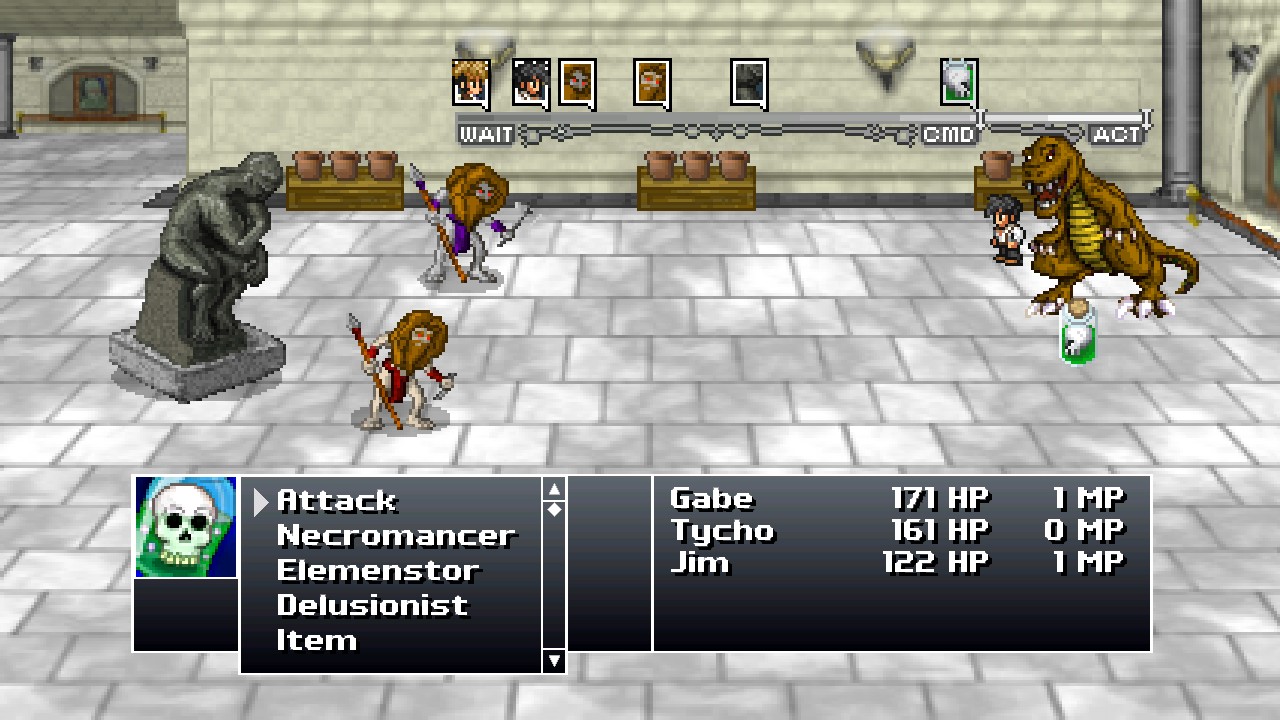
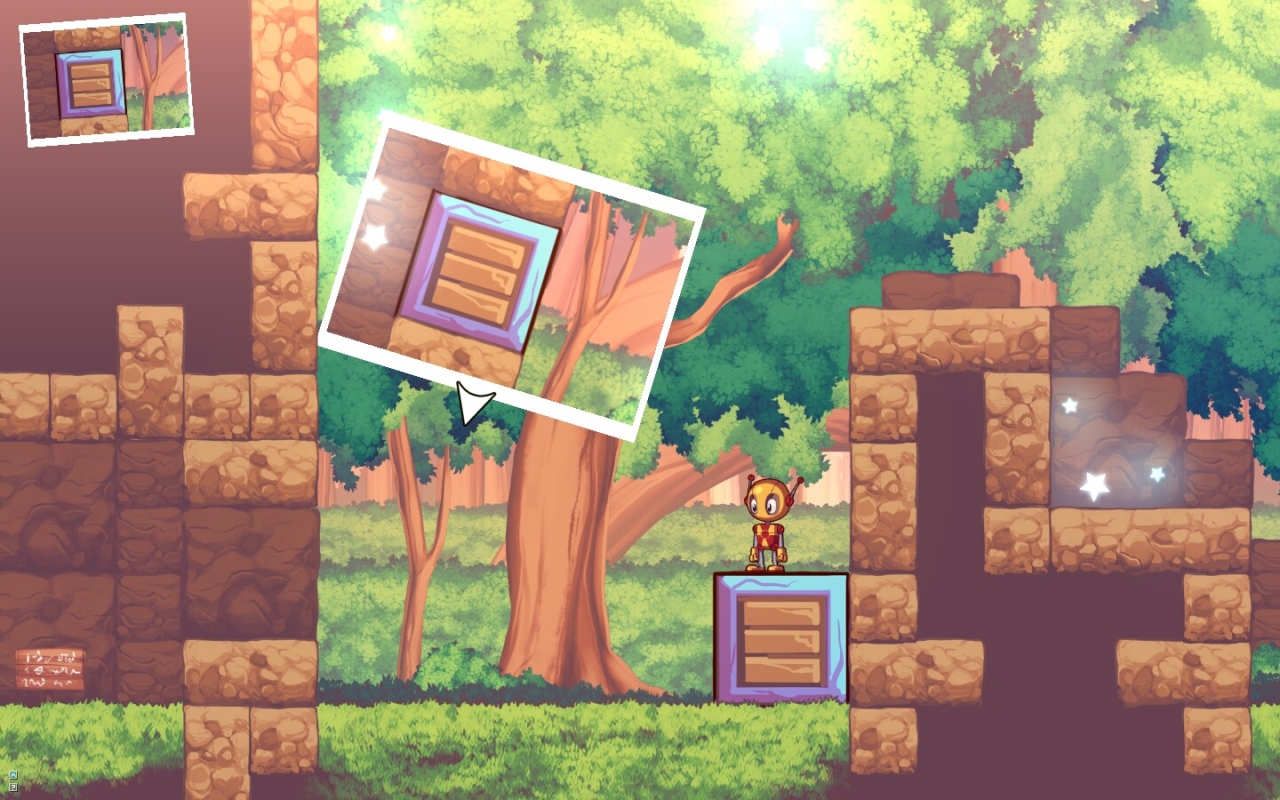



Good read as these always are Holden. I would like to hear more about your thoughts on Saint’s Row the Third though 🙂